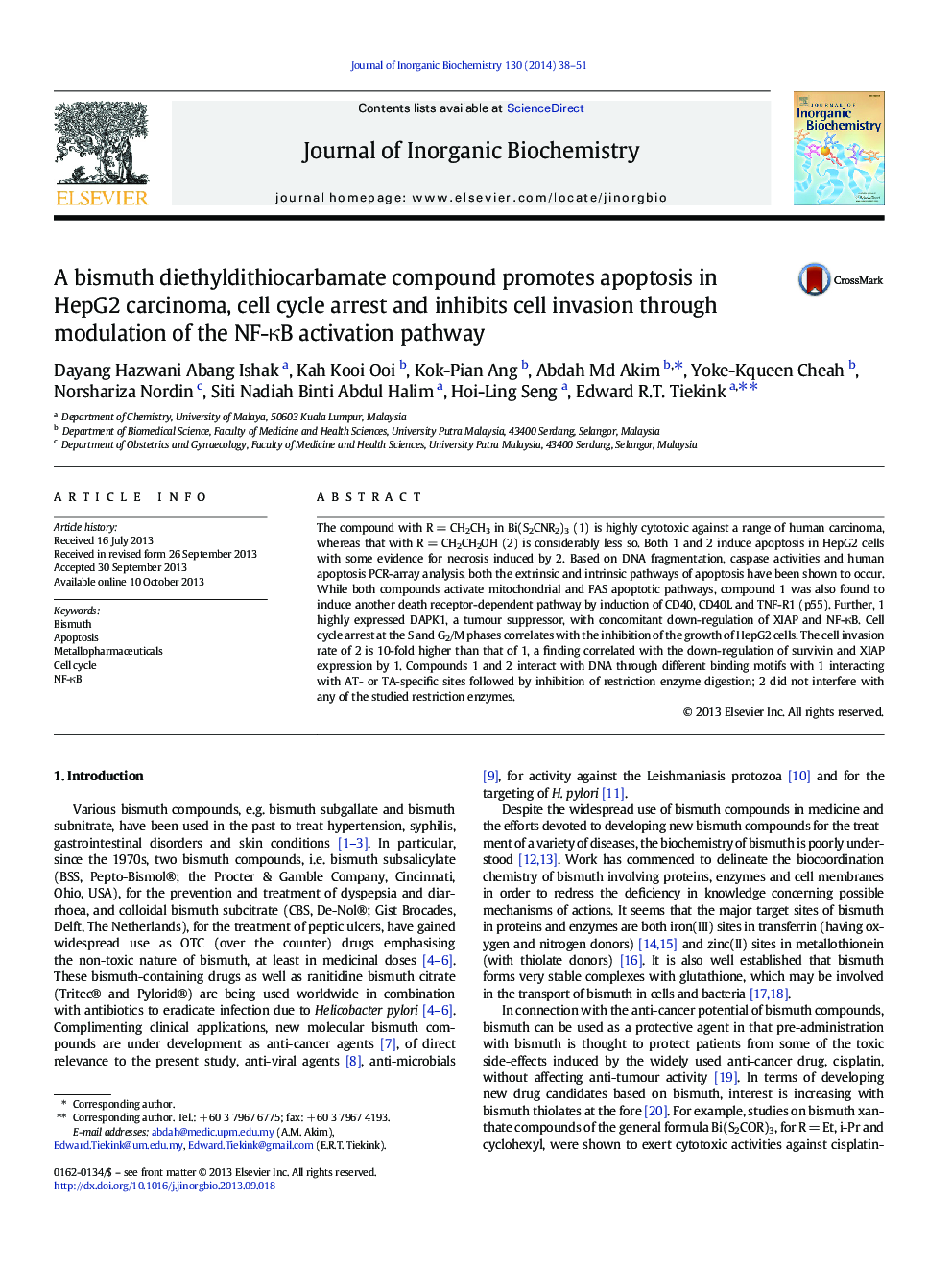| کد مقاله | کد نشریه | سال انتشار | مقاله انگلیسی | نسخه تمام متن |
|---|---|---|---|---|
| 1316287 | 1499457 | 2014 | 14 صفحه PDF | دانلود رایگان |

• Bi(S2CNEt2)3 is cytotoxic against several human carcinoma.
• Bi(S2CNEt2)3 causes apoptosis in HepG2 cells by both extrinsic and intrinsic pathways.
• Cell cycle arrest occurs at the S and G2/M phases.
• Bi(S2CNEt2)3 interacts with DNA at AT- or TA-specific sites.
The compound with R = CH2CH3 in Bi(S2CNR2)3 (1) is highly cytotoxic against a range of human carcinoma, whereas that with R = CH2CH2OH (2) is considerably less so. Both 1 and 2 induce apoptosis in HepG2 cells with some evidence for necrosis induced by 2. Based on DNA fragmentation, caspase activities and human apoptosis PCR-array analysis, both the extrinsic and intrinsic pathways of apoptosis have been shown to occur. While both compounds activate mitochondrial and FAS apoptotic pathways, compound 1 was also found to induce another death receptor-dependent pathway by induction of CD40, CD40L and TNF-R1 (p55). Further, 1 highly expressed DAPK1, a tumour suppressor, with concomitant down-regulation of XIAP and NF-κB. Cell cycle arrest at the S and G2/M phases correlates with the inhibition of the growth of HepG2 cells. The cell invasion rate of 2 is 10-fold higher than that of 1, a finding correlated with the down-regulation of survivin and XIAP expression by 1. Compounds 1 and 2 interact with DNA through different binding motifs with 1 interacting with AT- or TA-specific sites followed by inhibition of restriction enzyme digestion; 2 did not interfere with any of the studied restriction enzymes.
The Bi(S2CNEt2)3 and Bi[S2CN(CH2CH2OH)2]3 compounds are cytotoxic towards HepG2 carcinoma and induce apoptosis by both extrinsic and intrinsic pathways.Figure optionsDownload as PowerPoint slide
Journal: Journal of Inorganic Biochemistry - Volume 130, January 2014, Pages 38–51